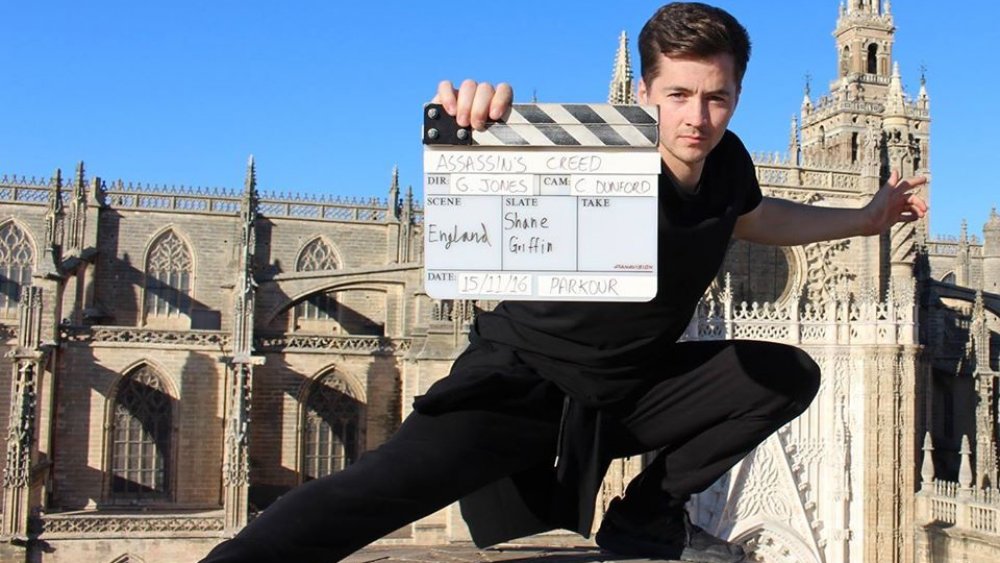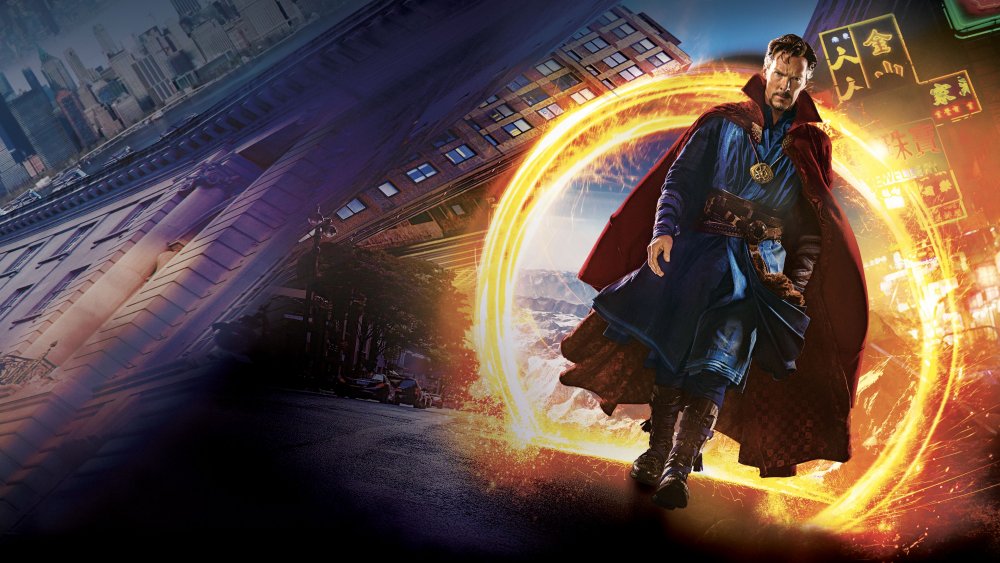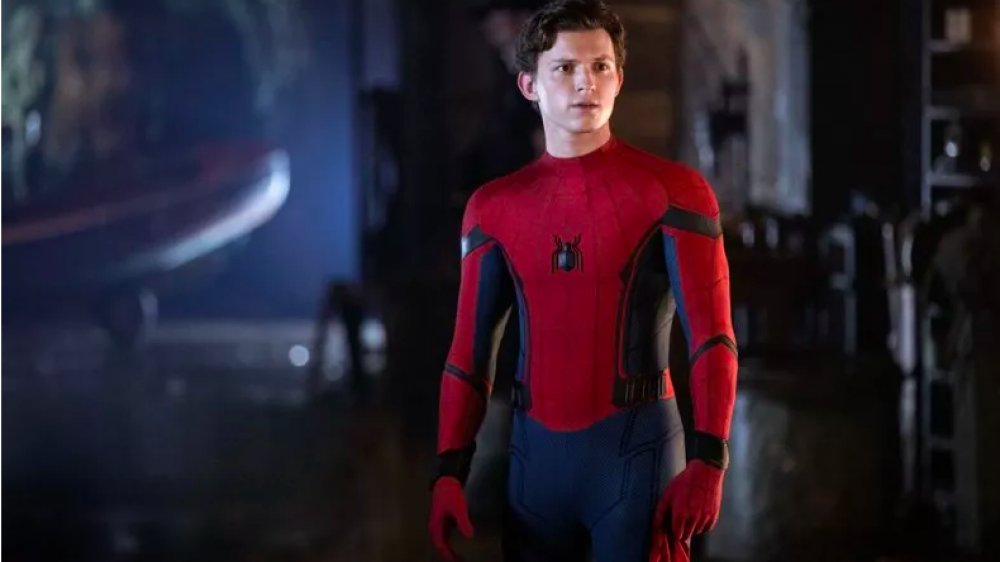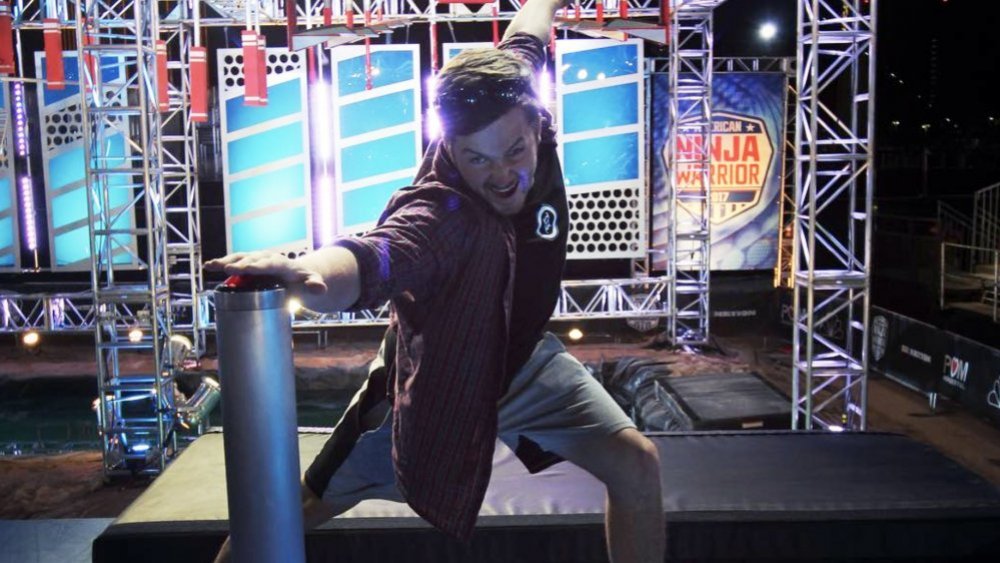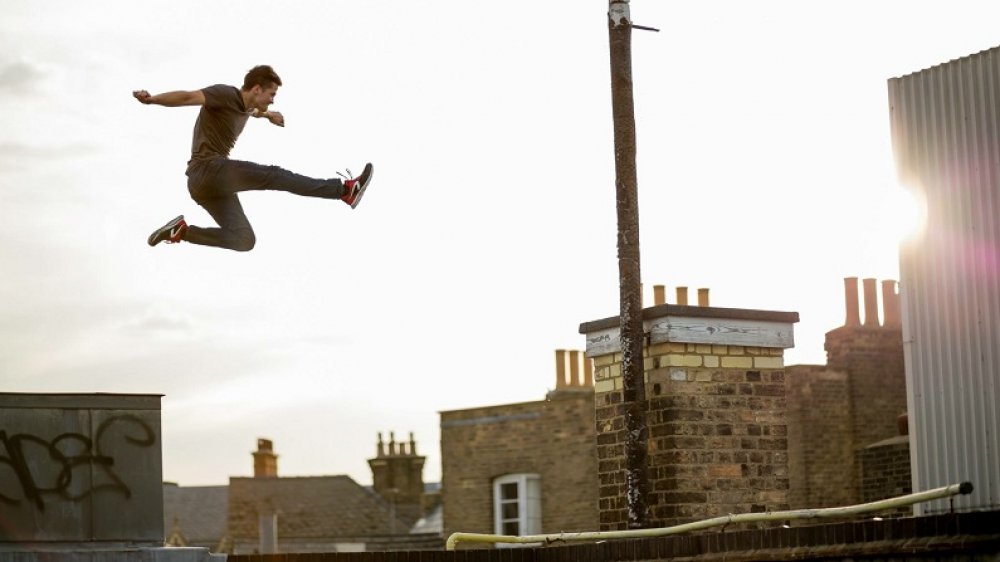Stuntman Shane Griffin Discusses Working On Doctor Strange, Spider-Man And More - Exclusive Interview
Shane Griffin has parlayed his love for taking risks into a successful career in Hollywood. As a parkour athlete he is known for rapidly navigating through urban environments and obstacle courses by running, jumping, and climbing, often scaling a building and leaping from rooftop to rooftop.
That unique harnessing of adrenaline and love for adventure led to Griffin becoming a stuntman and body double for such high-profile films as Doctor Strange, Mission: Impossible – Fallout, and Assassin's Creed. He also is a course tester for the global Ninja Warrior franchise, has been a stand-in on Spider-Man: Far from Home, and dabbled in acting, taking small parts in movies like Wonder Woman and Bohemian Rhapsody.
Looper exclusively spoke with Griffin about what it's like working on such blockbuster films alongside A-list movie stars, the scariest stunts and parkour maneuvers he's ever pulled off, and what it really takes to be a stuntman in Hollywood.
Transitioning from street artist to Doctor Strange
How was the transition from doing stunts for fun to working on big budget TV and movies?
It felt right, like a natural progression. I remember jumping out into a bush from my mom's two-story house. I jumped into a bush and then suddenly, at 30, I'm on set as a professional, and it all started with that jump and that sense of adventure.
I spent most of my life perfecting the things I enjoy and I wanted to put it all into something because when you get older you have the pressures of money and needing to support yourself. So I had those pressures and kind of felt like I needed to find a path I genuinely wanted to be on, or I might end up on a path I didn't want to be on. And you can easily get trapped in a job that you're not passionate about. So I started asking myself a question: If money were no object, what would I want to do? And this is exactly it. It's like a mature version of playing around as a child.
Your first film was 2016's Doctor Strange...
Yes. My first day on set was September 22, I remember because it was my birthday. But I didn't tell anyone because that would be a bit, "It's my first day and it's my birthday! Everyone pay attention to me!" I wasn't about that, but that's why I remember it.
What kind of stunts did you do for that movie?
Marvel offered me a role as a parkour consultant, helping putting parkour elements into the film and teaching the actors and all the stuntpeople certain moves. Growing up with Marvel, I got pretty emotional when they offered it to me.
I was in a lot of preview scenes, which are like planning scenes that end up in the film. We did them in a warehouse with boxes. They don't figure out stunts on the fly, it's quite a creative process of let's try this, let's try that.
At one point I was harnessed up pretending to be Doctor Strange and they flipped me twice in the air, which was pretty cool and quite a good scene. And I taught one of the villains how to do a move that ended up in the film. It's cool to have the essence of my movement in the film. People are usually like, "You're not actually in the movie?" I'm like, "No, I'm not, but certain moves of mine are." And that means more to me than having my face in it.
Memorable moments from the set of Spider-Man, Mission: Impossible, and more
You were a stand-in in Spider-Man: Far from Home and a stunt double in Mission: Impossible – Fallout. What was it like working on those?
I stood in for Tom Holland in Spider-Man, which is quite funny because I get comments on my online parkour videos that are like, "You're a real life Spider-Man!" So being a stand-in for actual Spider-Man was interesting.
The first time I met Tom was quite funny. It was my first time on set, and I was just about to prep for a scene and he came up to me and was like, "Hi, I'm Tom." And I was like, "Hi, I'm Tom." Then I was like, "No, I'm not Tom, you're Tom. I'm Shane, and you're Spider-Man." And he sort of laughed and I was like, "You've blown it, mate, why did you say that?" But it was funny. It's surreal in the sense that you watch these people and there is a certain admiration and suddenly you're working with them. That's probably why I thought I was Tom — yeah, that was it. I was so into character that I thought I was him.
As for Mission: Impossible, I doubled for a stuntman in a death scene. So I was made up to look like him, getting killed by Tom Cruise. A few days later I had to chase Tom up some stairs and he was like, "Man, you got some speed on you," and gave me a fist bump, which was sweet. He's a good guy.
You've dabbled in acting in some pretty big films, too: Wonder Woman, Kingsman: The Golden Circle, Bohemian Rhapsody. Which of those, or anything else that you've worked on, was the most fun?
Whatever you're doing — acting, stunts — it's all fun and unique in its own way. You always have a unique memory of this film or that film. But I'd say the one that comes to mind is Taboo, a British TV show starring Tom Hardy. An agent rang me and asked me to be a Molly, which is a 17th-century cross-dresser. I would have to wear a corset and a dress and a painted face, which seemed interesting to me. I had a couple of lines in it. My line was, "We're almost out of wine, you can bet on the day." And then Tom comes over, in character, and says, "Who said that?" And I forgot that he was acting because he was so serious, such a good actor. I was blown away. Having these little moments, they're pretty small, but they mean a lot to me.
What it's like to be a real-life Ninja Warrior
You travel around the world as a course tester for Ninja Warrior...
Yes. I work for this company called The ATS Team. They're responsible for most obstacle-based TV shows around the world. We did an Arabic Ninja Warrior in Egypt and American Ninja Warrior, of course, and ones in the U.K., France, Germany, loads.
The roles vary from place to place, but primarily it's obstacle course testing. They fly me out, the obstacles are installed, and I need to test them to make sure they're safe. That's the important thing. And then we dial in the difficulty level. Every obstacle needs to be doable. I also have to show the contestants how to do it. They're not allowed to touch the obstacles [before their run], but they can see me and some others demo the obstacles. Then there are camera rehearsals.
In some countries I have to dress up as a ninja. Like in the U.K. and Switzerland, I have to dress completely in black and run the entire course every night to a crowd of thousands, which is pretty unique. In America I do a bit more rigging, helping actually install the obstacles. There's a lot of brainstorming that needs to be done. Everyone on the team is multi-functional and multi-talented. I refer to the team as the Avengers because everyone's got their own special talent.
Has there ever been an obstacle that's too difficult for you to complete that you were like, "How is anybody ever going to do this?"
When I first started, America had already aired several seasons, but the U.K. was only on season three. I did my first testing for the U.K. and Egypt, and then I went over to America, and the obstacles were at such a higher level. I did fall a bit on my first year in American Ninja Warrior, but every time I fall I learn from it. And that's my favorite thing about Ninja Warrior — there's a lesson to be learned every time you fall. Like if I fall on a massive swing because my grip goes, I know I need to work on my grip strength. It shows you what you need to work on, more than any other sport I've done. And because I've done so many Ninja Warrior shows I've gotten better every year.
It's gotten to the point where I've done most of the obstacles, but I still get surprised by one and fall sometimes. Not often. But I do take falls quite seriously because there's not much room for error when I go outside and climb a five-story building. I apply that same mindset across everything I do, training-wise. Like, I don't want to fall when I'm on the Ninja Warrior course like I wouldn't want to fall when I'm climbing a building. It's different, of course, but the mindset is similar. If I fall on Ninja Warrior I learn from it. But, obviously, in the real world there's not that much room for error, so I have to be 100% certain I'm able to do what I'm going to do when we're not talking about a TV show.
Now that it's your job to be a stuntman and course tester for Ninja Warrior, how do your workouts differ from what you do for fun?
I used to go out with my brother when I was young and find challenges. But when you're young you don't need to worry about nutrition too much, or even exercise, really. I started off with that, having fun going out with friends.
When I got into doing parkour, I knew I had something. It felt natural. I was 25 and still living at home when I got the jobs on Doctor Strange and Ninja Warrior. Then I wanted to take nutrition more seriously because when I'm 35 I don't want to look back and wonder how physically fit I could have been. So I started to take it all seriously, and I started training more. I run for an hour once a week. I do bouldering sessions twice a week, outdoor and indoor. I do parkour training, and I do some technique training at home. All this preparation kind of indirectly helps work, but, honestly, it's more for my own personal training, my own challenges I have for myself. But it helps across the board.
There's no room for error when it comes to certain stunts
What's the scariest moment you've ever encountered, whether it was on the street or on Ninja Warrior?
There are a couple of times that come to mind. If we're talking about TV shows, there's one stunt I did on a water sports show called Cannonball, where I also test obstacles. There was this big thing called the Blob, a massive inflatable, and two people jump on the back and it propels you in the air. Picture this, I'm on the front of the Blob and there are two people on a high platform who jump on the back, and it propels me about 18 feet — probably a lot more than that, maybe like five stories. I remember I was laying there on the front of the Blob looking back, and I saw these two guys shaking and freaking out up on the platform. I was like, "Why are they freaking out? I'm the one doing it, they're just jumping on the back."
But they jumped off at the wrong time and were out of sync. They were supposed to jump together, hitting the back of the Blob at the exact same time, to propel me upwards. If they are off in any way it creates a wave effect, which makes you do flips. So I ended up going like four stories in the air and doing loads of flips and landed on my side, and I couldn't breathe for like 10 seconds. So that was scary in the sense of I have to rely on other people. But in general I feel very safe with what I do.
What about out in the real world, like if you're scaling a building?
With climbing outside I tend not to do things that scare me. With fear comes adrenaline and shaking, and that's not what you need when you want to be calm and focused. Adrenaline is useful if you need to lift a car off someone, or if there's a fire and you need to get out. But when I'm at the bottom of a climb, I'm putting together all the elements and testing it's all secure [in my head]. I know I can do it because I have all this preparation beforehand that I do every week, all the years of training and nutrition. So my belief in my ability outweighs fear, but fear is constantly there, it's part of being human.
The closest thing [to fear] was doing a climb in Switzerland that was like six stories on a ladder made of sheets of glass. You have to pinch-grip, so you have to hold your weight with your fingertips all the way up six stories. When I got to the top there was a roof, and I jumped to the roof and looked down, and there was a flickering moment of "if I don't focus I could die." In that moment there would have been no use in me feeling scared. It's more like a heightened awareness. I know what I need to do; I just have to apply it. I trusted my abilities and climbed down and it was fine. It feels so normal to me, but I try and put myself in other people's shoes and I know it seems like a crazy thing to do.
